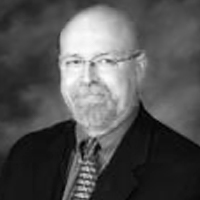Interview with George Cire, Au.D., Cochlear Americas
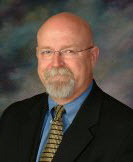
George Cire, Au.D.
CAROLYN SMAKA: This is Carolyn Smaka from AudiologyOnline, and today I have the pleasure of speaking with Dr. George Cire from Cochlear. George, it's really great to talk to you today.
GEORGE CIRE: Thanks, Carolyn. I appreciate the time and the opportunity to visit with you at AudiologyOnline.
SMAKA: Before we get into our topic today, can you talk about your role at Cochlear and your background as well?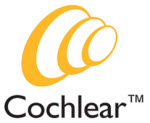
CIRE: Yes. My current role is Senior Manager for Clinical Technical Affairs within the Bone Anchored Solutions Division of Cochlear Americas. I've been with Cochlear Americas for five years now. Cochlear Americas distributes both cochlear implants and bone-anchored devices, and I specialize in the bone-anchored product line. I am an audiologist with over 30 years of experience. I spent a large portion of my career in the clinic working with an ENT-based practice in Texas. I've also worked in the industry as a representative for a major hearing aid manufacturer, and in private practice as well.
SMAKA: A few months back I spoke with Dr. Weber and Dr. Wilkinson about the new Cochlear Baha 3 System. It was interesting to hear about all the new features of the implant from their perspectives as physicians.
CIRE: The interesting thing about bone-anchored solutions is that although they may seem new to a lot of people, the technology has actually been available for more than 30 years, and the implant systems hadn't changed very much over that time period. Most of that technology grew out of what we learned from the dental implant industry.
As you heard from Dr. Weber and Dr. Wilkinson, in developing our new Cochlear Baha 3 implant, we looked at changing the implant surface and geometry of the implant, to enhance osseointegration and provide better stability once the implant is placed in the bone. The secondary benefit is that the interface between the skin and the implant was improved. As audiologists, we're involved in counseling these patients, and it's important to understand the features and benefits of this particular implant, which is unique to Cochlear and has been designed with improved patient outcomes in mind.
SMAKA: And you also introduced the Baha 3 Sound Processor as well, correct?
CIRE: Yes, the Baha BP100 was launched about two years ago. It was our first foray into a programmable sound processor for Baha. We had digital processors in some of our legacy devices, but they were single-channel designs. The Baha BP100, now known as the Baha 3 Sound Processor, is based on a twelve-channel signal-processing platform. There is also a suite of software tools that allow the audiologist to be able to measure in-situ bone conduction thresholds and program the device, or the amplifier, so that it's much more similar to a advanced programmable hearing aids from the standpoint of features. Automatic directionality, noise reduction, feedback reduction and the ability to control gain in twelve channels is really important. These features have significantly improved the ability to fine-tune the sound processor for the patient's individual needs.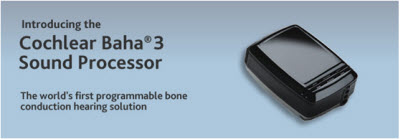
SMAKA: Are audiologists who work with the Baha System the same as those who are fitting cochlear implants or are they those who are fitting hearing aids? I'm sure it varies from facility to facility, but what is the 'norm'?
CIRE: That's a great question and the answer is that it's kind of all over the place, and it's very site-specific. If I had to generalize, I would say that the majority of clinicians that are working with the Baha System are working primarily with acoustically amplifying devices like hearing aids. There are centers where there are implantable programs where the audiologists share duties, both in the cochlear implant world and the bone anchored world. But I would say the vast majority of clinicians that are working with Baha on a day-to-day basis really more reside in the dispensing audiology clinic because we're dealing with a more similar type of technology and delivery system.
SMAKA: I see. So I would imagine that the signal processing features and fitting flexibility with the new Baha 3 Sound Processor really resonate with these audiologists who are also fitting hearing instruments today.
CIRE: That's correct. In that regard, what we tried to do from a hearing performance perspective was to design a sound processor that did similar things to what advanced-technology hearing aids do, and that is to, number one, clean the signal before it's amplified so that you can remove some of the unwanted noise. We all know that if we take a corrupt noise-laden signal and we apply it to an amplifier, what comes out the other end is just a louder version of this corrupted signal, and it's difficult for a damaged auditory system to work with that.
So if we can clean the signal ahead of amplification, it creates a much better scenario for processing. Then we match the amplification needs of that patient using special features like in-situ bone conduction measurements and prescriptive formulas that are specifically designed to work with the bone conduction pathway. That allows us to customize the device to the bone conduction application. Finally, we want to be able to deliver that vibrational signal as effectively as we can to the cochlea. We do that through a very proven system of osseointegrated implants. Now with the new implant system, we have even better stability, better skin interface and so we minimize post-operative complications. Together, all of these things demonstrate the improvements in the Baha 3 System which combine to improve patient outcomes.
SMAKA: How has the new Baha 3 System been working out with pediatrics, and what can audiologists expect when working with this system with children?
CIRE: When the bone-anchored devices were first developed, they were really developed with an adult patient in mind. As time grew and as this treatment became more and more popular, we began to see interest in bringing the benefits to the pediatric patients. We needed to look at the requirements for pediatric fittings and design new features. Something as basic as a tamper-proof battery door had not existed in a Baha until very recently, with the advent of the Baha 3 System. Kid-friendly colors, devices to secure the processor to the child's clothes, and a more robust design that is water protected to enable longevity were other such features that we saw were needed for children and were implemented into the new Baha 3 Sound Processor.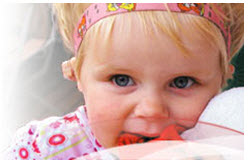
The Baha Softband enables a comfortable fitting until the child is old enough for surgery.
We've also designed the device to be coupled to a Softband, which is a much more comfortable and cosmetically appealing application for young children than the traditional steel headband. We only implant children age five years and older due to the maturity of the bone with the osseointegrated implant system. So children who are identified early, particularly those children who have cranial-facial anomalies, atresia, or microtia, need an intervention to help their auditory learning and their speech and language development. For these children, we're able to apply a Baha System through a Softband, with better compliance on behalf of the child to wear it on a long-term basis. So we're seeing better clinical outcomes from that perspective.
The nice thing is that the processor is the same whether it is used on the Softband or with an implant. There's no need to purchase additional equipment once the child receives the implant. So we're seeing some real advantages for pediatric patients using the Baha System.
We did get a lot of requests from clinicians wanting fun colors, because you know, when you're dealing with the pediatrics, you may need to coax them into wearing the device and the children need to be comfortable wearing it. We found that the fun colors were oftentimes adopted also by the adult patients, and as a result it meets both needs very nicely.
SMAKA: Is there a lower age limit to the fitting criteria? Can you proceed with the Softband fitting as soon as the child is identified?
CIRE: Absolutely. In the particular subset of the pediatric population where we have the cranio-facial anomalies or syndromes that cause conductive hearing loss, it's especially important to stimulate the cochleas and be able to provide that avenue for speech and language development. In infants, the Baha on a Softband can be placed anywhere on the skull. As the child becomes more developed and there is head control, you typically see the audiologist placing the Baha on a Softband behind the child's ear so that the microphone is in the appropriate place to pick up sound. We see a lot of advantages to doing that.
But there is no lower age limit to fitting the Baha on the Softband. If you've ever worked with young children before the advent of Softband, you had traditional air conduction hearing aids that had been converted to bone conduction use using a spring steel headband. As you can imagine, that would often create problems of comfort and sometimes even create deformities of the skull as the child developed. So the Softband was a very welcome development for that population.
SMAKA: One interesting point I had never considered until now is that you can use the same speech processor when the child moves from the Softband fitting to the implant. That is great. I assume it would only need a little tweaking in the programming?
CIRE: Absolutely, and that's a real advantage when you've got a programmable system like the Baha 3 Sound Processor. We know that there is a certain amount of the vibrational signal that is attenuated as it passes through skin tissue to the bone and then ultimately on to the cochlea. On average, you'll see anywhere from a 12 to 13 dB improvement in sound transmission through the osseointegrated implant system. That's one of the real advantages of the pathway of hearing which we call direct bone conduction. You don't get that in anything but an osseointegrated implant system like the Baha 3 System.
SMAKA: Earlier you mentioned Baha fitting using special formulas developed for the bone conduction pathway. Can you talk more about that, and how Baha fittings have changed since the Baha 3 has been available?
CIRE: Sure. When the first Baha devices came to market in the early days, because they were limited in terms of what you could do to them, they were oftentimes viewed as a plug-and-play technology. Because they were mostly applied to a simple, conductive hearing loss, a linear processor and a little bit of volume or gain really did the trick quite nicely. But now we've moved into fitting mixed and conductive hearing losses as well as single-sided deafness which is a whole topic in and of itself. Today the programmability of the device is really important.
One of the key features for us is the advancement of in-situ testing, which we call Bone Conduction Direct, or BC Direct. With BC Direct, you actually convert the Baha 3 Sound Processor as it is worn into an audiometric transducer. The software produces a function like an audiometer, and you measure the bone conduction thresholds through the processor and the implant. You can actually get a measurement of how that implant in its position is interacting with the skull. Those bone conduction threshold measurements are used as the basis for calculating your target fitting based on newly developed bone conduction formulas.
One of the things we learned about formulas is that most fitting formulas for amplification devices were verified and validated on air conduction hearing and not on bone conduction. So we learned a pretty valuable lesson as we developed the BC Direct technique. If we just took a standard NAL-NL1 or DSL v5 threshold prediction formula and applied the bone conduction thresholds to that, the patients would often report that the signal was too loud and that it was not appropriate. We discovered that we had to create our own proprietary fitting formula that was relative to the bone conduction pathway, so we created the Cochlear Baha Fitting prescription that is used with the Baha 3 System.
When you combine a prescription developed specifically for bone conduction with the multiple features and parameters that the audiologist has at their disposal with the Baha 3, it provides a very good toolbox to enable customization of the device to individual hearing needs.
SMAKA: It sounds like it's moving to more evidence-based fitting as opposed to the old, "Now, how does that sound?"
CIRE: Yes. That's what I refer to as the Verizon method of fitting where you ask, "Can you hear me now?" We've definitely moved away from that. The challenge with bone-anchored systems is that we can't use probe microphone verification or conduct the traditional acoustic measures because we're working in an entirely different domain, and that is the mechanical, vibrational arena. We still need to use older types of verification measures like aided versus unaided sound field threshold measurements, which only tell part of the story. We have also found that, especially with our single-sided deafness patients, the use of tests like the QuickSIN (Killion, Niquette, Gudmundsen, Revit,& Banerjee, 2004) give us a better picture of how the patient is going to benefit from the Baha System. The QuickSIN test is an adaptive speech-in-noise test looking at suprathreshold measures of speech intelligibility in noise. With pediatric patients, you're going to consider functional improvements in the child, such as how they respond with and without the Baha from distances of 3, 6, and 12 feet away. By observing these types of behaviors or using a simple tool like the CHILD inventory developed by Karen Anderson and Joseph Smaldino (2000) you can measure aided versus unaided behavioral attributes and determine whether you are moving toward a positive outcome.
Clinicians have to be somewhat innovative in their techniques as they work with bone conduction devices, as we continue to look for new and better ways to be able to predict how these devices interact with the skull so that we can determine best practices moving forward.
SMAKA: You mentioned bone conduction implant technology has been around for 30 years. What is the history of Cochlear offering bone conduction solutions?
CIRE: The migration of this business unit was that it was originally developed back in the 1970s in Europe by Nobel Biocare which is a large, international pharmaceutical company. They spun off a business unit called Entific Medical Systems. Entific was the agency that was responsible for the development and entry of this particular technology into the United States in 1996. In 2005, Cochlear purchased the Entific business unit and it became part of the Cochlear family.
We are wholly owned by Cochlear Limited. The biggest technological convergence was in the area of advanced signal processing. Cochlear was working in advanced signal processing for their cochlear implants, and we were able to leverage the knowledge gained in that area with the work being done at Entific. To give you an example, when we bought the Entific company there were only about 50 people in the factory in Sweden. Today, there are over 250 people in a brand new facility in Gothenberg, Sweden, where we have been developing some of these more advanced devices.
The Baha 3 Sound Processor and the new Baha 3 Implant were developed out of the new synergy created by that marriage between these two companies, and we're committed to further long term growth and innovation.
SMAKA: What has been some of the recent notable research in this area?
CIRE: Some of the latest pediatric research has compared the difference in improvement with the Baha on a Softband versus the placement of a traditional bone conduction hearing aid on a hard head band. When you look at that on the surface, you might assume that those two technologies would provide a similar aided outcome. But the reality is that recent published research shows that there's an improvement in aided functional gain measurements with the Baha on a Softband.
I think the difference between those two modalities is that the traditional bone conduction hearing aid used a bone conduction oscillator made by RadioEar, called a B71, which is the typical bone conduction oscillator that you find on an audiometer today. That was designed back in the 1940s to develop threshold measurements for pure-tone stimuli. You could drive it a little bit harder and put a speech signal through it, but it was sort of a compromise. When Baha came to the marketplace, there was a specific transducer developed in order to amplify and pass a speech-based signal. The differences in the transducer architectures, I think, create that improvement. A recent study in JAAA (Christensen, Smith-Olinde, Kimberlain, Richter & Dornhoffer, 2010) documented these differences quite nicely. This study was a replication of an earlier study that was done a few years ago in the Netherlands where they just looked at two subjects. Lisa Christensen and colleagues replicated the Netherlands study using a group of 10 children at Arkansas Children's Hospital. This study was quite revealing in terms of showing the efficacy of using a Baha, even on a Softband, as the better choice for amplifying children who need that type of treatment.
That's an important point to make in terms of third-party reimbursement, because there is some disparity in the costs of the two types of devices. From the standpoint of compliance, comfort of wear and clinical outcomes, the Baha will typically outshine the traditional device, and you see it now becoming more the standard of care.
There's also a lot of research interest in the use of Baha with SSD, where the Baha is used as a transcranial CROS mechanism. You're taking a signal on a deaf side and amplifying it and transmitting the sound through the skull to the only hearing ear that's contralateral to the dead ear. This will create the ability to improve speech in the presence of background noise, and will give the patient, although not better localization, some degree of spatial hearing that they otherwise would not have.
There is also a lot of interest in looking at children who have SSD. We know from a lot of the research that's been published that children with unilateral hearing loss are much more likely to repeat grades in school and have other academic problems. The question is, "How do we build an evidence base to show that maybe Baha would be an effective treatment for that population?" There are a lot of fertile areas for people to think about in terms of researching this and it is starting to gain momentum. Cochlear's commitment is to encourage research, because the better evidence base we have, the better off we're going to be in terms of developing new solutions for patients.
SMAKA: It seems that as a professional, Cochlear is doing so much to keep parents, teachers, educators, and audiologists informed. What are some of the opportunities to learn more about Baha or best practices in fitting?
CIRE: We're definitely committed to training professionals so that they understand the options for fitting patients with bone-anchored solutions. We're also building some new infrastructure on our Web site that gives families and people who are considering Baha more information. Our HOPE program, headed up by Donna Sorkin, is aimed at educators, parents and ancillary personnel to gain more insight into habilitation and rehabilitation with both bone-anchored and cochlear implant solutions. HOPE resources are available on our Web site, and many HOPE courses are available on AudiologyOnline.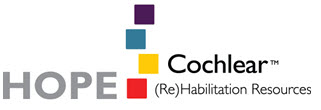
Our goal is to try to cover the waterfront, if you will, in terms of who needs this information. We've definitely made training and education a priority because we believe that people with good facts and good information can make good decisions.
We're committed to bone-anchored solutions. We've been an innovator in this area for quite some time and we are in it for the long haul.
SMAKA: I really appreciate the opportunity to be able to talk to you today. I learned a lot! Thank you so much, George.
CIRE: Thank you.
References
Anderson, K. L., & Smaldino, J. J. (2000). Children's Home Inventory of Listening Difficulties (CHILD). Retrieved March 22, 2011 from kandersonaudconsulting.com/uploads/child_questionnaire.pdf
Christensen, L., Smith-Olinde, L., Kimberlain, J., Richter, G.T., & Dornhoffer, J.L. (2010). Comparison of traditional bone-conduction hearing aids with the Baha System. Journal of the American Academy of Audiology, 21(4), 267-273.
Killion, M.C, Niquette, P.A., Gudmundsen, G.I., Revit, L.J., & Banerjee, S. (2004). Development of a quick speech-in-noise test for measuring signal-to-noise ratio loss in normal hearing and hearing impaired listeners. Journal of the Acoustical Society of America, 116(4), 2395-2405.
About Cochlear Americas
Cochlear Ltd. and its subsidiaries, including Cochlear Americas, are the world's leader in advanced hearing technologies. Since launching the first multichannel cochlear implant system more than 27 years ago, Cochlear Limited and its subsidiaries have brought the miracle of sound to more than 200,000 hearing-impaired individuals across the globe. Cochlear Americas markets the Baha® implantable bone-anchored hearing system for treatment of conductive and mixed hearing loss, as well as single-sided sensorineural deafness. Cochlear's state-of-the-art cochlear implant technology, based on extensive research and development at preeminent academic institutions, provides the ability to hear sound and to better understand speech, enhancing both learning capabilities and quality of life for those with severe to profound sensorineural hearing loss. For more information about Cochlear's products, call Cochlear at 800/523-5798 or visit www.cochlearamericas.com or the Cochlear Web Channel on AudiologyOnline.


